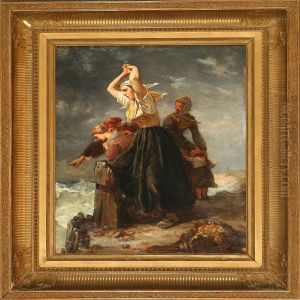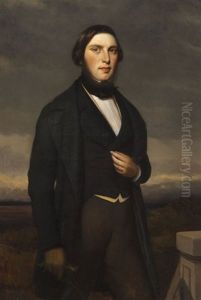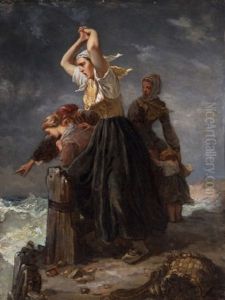Louis Jules Etex Paintings
Louis Jules Etex was a French sculptor and painter, born on September 20, 1810, in Paris. Etex is primarily known for his work in sculpture, which showcased his talent in both neoclassical and romantic styles. Despite this, he is less widely recognized than some of his contemporaries.
Etex studied under the prominent sculptor Antoine-Jean Gros and later entered the École des Beaux-Arts in Paris, which was the premier art institution in France. His early career was marked by a significant achievement when he won the coveted Prix de Rome in 1833 for his relief 'Cain after the murder of his brother Abel.' This award granted him a residency at the Villa Medici in Rome, where he was able to study classical sculpture and refine his skills.
After returning to France, Etex continued to work and gained commissions for public monuments. He contributed to the decorative program of the Arc de Triomphe in Paris, which was one of the most prestigious projects of the time. His works for the monument included the high-relief sculptures 'The Departure of the Volunteers of 1792' (also known as 'La Marseillaise') and 'Peace,' both of which display his mastery of dynamic composition and emotional intensity.
In addition to his public monuments, Etex also produced busts, funerary monuments, and even experimented with painting. However, his paintings did not achieve the same level of acclaim as his sculptures. Throughout his career, he was involved in various controversies, including one surrounding the tomb of Napoleon, for which he had created designs but which were ultimately rejected in favor of those by another artist.
Etex's later years were marked by a decline in his reputation and financial difficulties. Despite this, he continued to work until his death in Paris on February 14, 1889. Today, Louis Jules Etex is recognized for his contributions to French sculpture, especially in the context of the Romantic movement and the monumental works of the 19th century.






